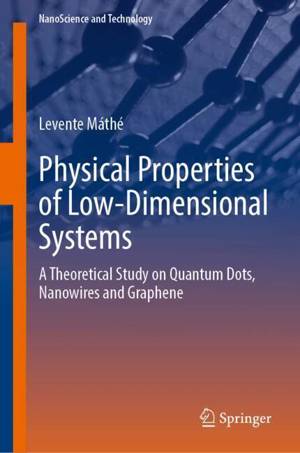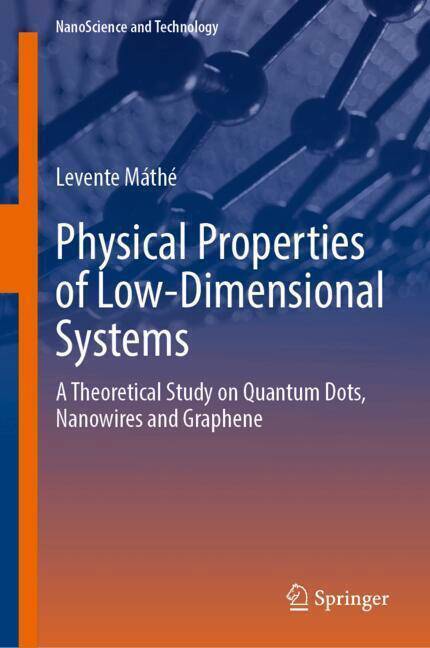
- Retrait gratuit dans votre magasin Club
- 7.000.000 titres dans notre catalogue
- Payer en toute sécurité
- Toujours un magasin près de chez vous
- Retrait gratuit dans votre magasin Club
- 7.000.0000 titres dans notre catalogue
- Payer en toute sécurité
- Toujours un magasin près de chez vous
Physical Properties of Low-Dimensional Systems
A Theoretical Study on Quantum Dots, Nanowires and Graphene
Levente MáthéDescription
This book provides an in-depth theoretical exploration of quantum transport and optical properties in nanodevices, focusing on quantum dots, topological superconducting nanowires, and graphene. It is designed for graduate students and researchers seeking to understand these systems and their implications for advancing nanophotonic and nanoelectronic technologies.
Beginning with foundational concepts in quantum transport, the book covers key phenomena such as the Coulomb blockade, the Kondo effect, and the physics of Majorana fermions and Majorana bound states. A review of graphene s electronic properties and the optical characteristics of quantum dots is also included, establishing a basis for the more advanced topics that follow.
The book explores a nanojunction model where a quantum dot is integrated into a semiconducting-superconducting heterostructure that hosts Majorana bound states. The study investigates Majorana-induced phonon-assisted quantum tunneling in topological superconducting nanowires under magnetic flux. This model offers valuable insights for future experiments aimed at detecting Majorana bound states, with implications for topological quantum computing.
Additionally, the book explores quantum transport in a system where a semiconductor quantum dot is embedded between monolayer graphene leads. Applying an external magnetic field enables spin-polarized transport, providing an ideal platform for studying many-body quantum phenomena such as the Kondo effect. Using nonequilibrium Green s function formalism, this section highlights how graphene s electronic properties can drive next-generation nanoelectronic devices.
Beyond transport, the book also examines the optical properties of quantum dots, focusing on their linear and nonlinear characteristics. Perturbation theory is employed to study absorption coefficients and refractive index changes in two-level quantum dot systems, with potential applications in optoelectronics and photonics.
Throughout, complex mathematical treatments are presented in an accessible manner, ensuring that even readers with a foundational understanding of nanophysics can engage with the material. This book serves as a valuable resource for researchers and students working in the fields of nanophysics, nanoelectronics, and quantum device research. It deepens theoretical understanding of these systems but also offers practical insights into their experimental realization and technological potential.
Spécifications
Parties prenantes
- Auteur(s) :
- Editeur:
Contenu
- Nombre de pages :
- 155
- Langue:
- Anglais
- Collection :
Caractéristiques
- EAN:
- 9783031916014
- Date de parution :
- 31-07-25
- Format:
- Livre relié
- Format numérique:
- Genaaid
- Dimensions :
- 155 mm x 235 mm

Les avis
Nous publions uniquement les avis qui respectent les conditions requises. Consultez nos conditions pour les avis.






